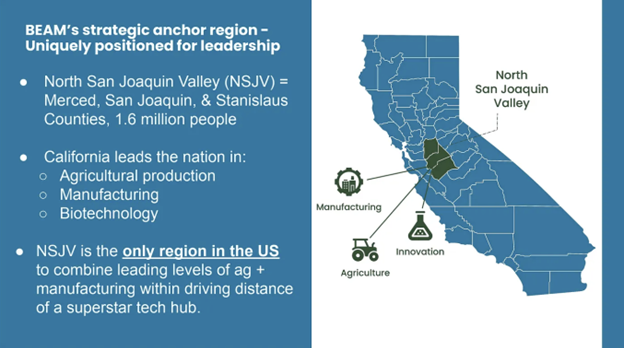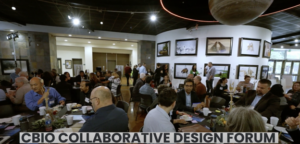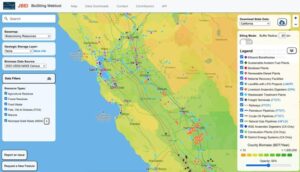
Hotshot Lawrence Berkeley Lab energy experts and local leaders are participating in a regional initiative to see if agricultural wastes can fuel next-gen aviation fuels, plastics replacements and maybe even a few things no one has thought of yet, experts involved said. The innovative coalition is moving forward with a specific project to map the available resources to support a nascent, bioindustrial economy in the Central Valley.
That coalition involves cutting-edge energy expertise from leading scientists at Berkeley Lab, tech philanthropists exploring the edge of carbon innovation, circular economy evangelists and wineries.
“We are really rethinking our relationship with waste here in the Central Valley,” said Karen Warner, CEO of Modesto-based BEAM Circular. “We’re working to unlock the power of agricultural communities to transform the waste that often comes from the food and ag sector into new economic value and environmental opportunities.
Some suggest the Central Valley could be the epicenter of a new bioindustrial innovation era. Among them is Paul Maglio, professor of management in the school of engineering at UC Merced, who spoke at a BEAM Circular community brainstorming session that E. & J. Gallo Winery participated in. He thinks the Central Valley has everything it takes to make it happen there.
“Innovations are going to happen in this area,” Maglio said in a video of a recent meeting. “With the access to intellectual capital in the Bay Area, the access to the educational resources as well as access to the raw materials that we need, that makes [the Central Valley] the perfect spot.”
In July, another BEAM Circular initiative, funded by the Virtual Institute on Feedstocks of the Future (VIFF), received more than $9 million for a digital mapping project focused on the North San Joaquin Valley co-led by BEAM Circular, Berkeley Lab and UC partners.

Exit Ag Waste Burning: Growers’ Burn Permits a Thing of the Past
The initiative is welcome news for those involved in making California air cleaner and safer. According to Valley Air officials, the Central Valley historically burned “well over 1 million tons annually.”
It took more than two decades for the 2003 legislation to stop burning ag waste to be implemented, critics said.
While regulations and incentive programs reduced ag waste in the valley to 125,000 tons in 2022, a near complete phaseout of remaining agricultural open burning in the Valley goes into effect by Jan. 1, 2025.
“Just before the phaseout began, around 25,000 to 30,000 acres of vineyards would be burned per year,” said Heather Heinks, communications manager for San Joaquin Valley Air Pollution District. “That has dropped off significantly since the phaseout and incentive program began.”
Turning Carbon Into Dollars
Researchers are trying to find out if what’s waste to some can become a valuable input for others in a novel approach to the problem.
“We want to prevent those emissions and turn that carbon into dollars,” said Blake Simmons, division director, biological systems and engineering at Berkeley Lab, a leading tech partner in the project.
Schmidt Sciences (a group funded by climate activist and philanthropist Wendy Schmidt and husband Eric Schmidt, who was the CEO of Google) and the Foundation for Food & Agriculture (FFAR) funded a mapping project which will help those looking for available waste sources under its Virtual Institute on Feedstocks of the Future (VIFF) to transform biomass into alternative feedstocks for biomanufacturing.
“Carbon is all around us, whether it’s the byproduct of an orchard harvest or solid waste from cities, but right now, it’s too expensive to extract and use,” said Dr. Genevieve Croft, Schmidt Sciences program scientist who is directing VIFF. “Turning the carbon we have into the carbon we want is a critical challenge. VIFF aims to accelerate the timeline of the science needed through interdisciplinary research collaboration.”
This virtual institute is planting its seeds on fertile ground where industry players are already lining up, said Warner.
“BEAM Circular is launching a variety of services for Central Valley byprod- uct startups in the coming months, including an accelerator program,” Warner said. “We have raised over $16 million in seed funds since our launch in 2023 to support the growing circular bioeconomy sector in the Central Valley in addition to the Schmidt Sciences $9.7-million investment in the joint BioCircular Valley project. This funding is a combination of county, state, federal and private sector grants and indicates the growing commitment and support for this industry and recognition of the unique opportunity for the valley to serve as a hub for new innovations in use of agricultural byproducts.”
BEAM Circular’s partner, Carmel Valley-based venture capital firm Hawk Tower, announced in September it is committing $30 million in venture capital to biocircular startups in the North San Joaquin Valley over the coming decade.
E. & J. Gallo Winery is among the wineries BEAM Circular and the virtual feedstock project staff have been holding discussions with.

Multi-Crop Waste Combo Is Unique: “An Opportunistic Paradigm”
What makes the Central Valley unique is the diversity of crops and waste streams, experts said. But currently there is no inventory of these wastes.
That’s the problem the virtual feedstocks project is aimed at addressing: centralizing all the information about available ag wastes together in a database-driven map, or “digital bioeconomy cartography,” so buyers can find out about the timing and volume of available materials.
While finding new uses for ag waste isn’t new, combining a variety of ag waste is, Simmons said.
“So, you’re not talking like the conventional sense of one feedstock that has to be available at a certain tonnage that goes into one product, that one product only, and then you’re locked into that business model,” he said. Examples of that include corn stover converted to ethanol or corn grain converted to ethanol.
“What we’re trying to do is challenge that conventional wisdom and develop technologies that can handle mixed inputs, that take winery waste, ag waste, almond waste, municipal solid waste… and blend them and then convert them. So it’s an opportunistic paradigm that’s really rooted in fundamental science and technology. We’re trying to challenge the conventional wisdom out there. We’re just here to prove what’s possible. And then it’s up to the marketplace to prove what’s practical,” he said.
“The whole project is geared around taking a look at available ag resources in north San Joaquin Valley. So we talked with folks like Gallo. We’ve talked to other wineries as well,” he said.
“We are looking at winery waste which could be trimmings, clippings and grape pomace… So it’s basically those waste streams that are increasingly being paid attention to in California because they don’t want to burn ag residues anymore, for example.
“We see there’s a big opportunity to prove what can be done with them beyond composting, instead being made into something that others use to create products that can be sold out in the marketplace.”
“Feedstocks from agricultural residues, like corn stover, or forestry residues, like sawdust, have potential to become useful products, though the process to get there can be logistically and financially challenging,” said FFAR scientific program director Dr. John Reich. “VIFF focuses on driving collaboration to catalyze innovative solutions.”











